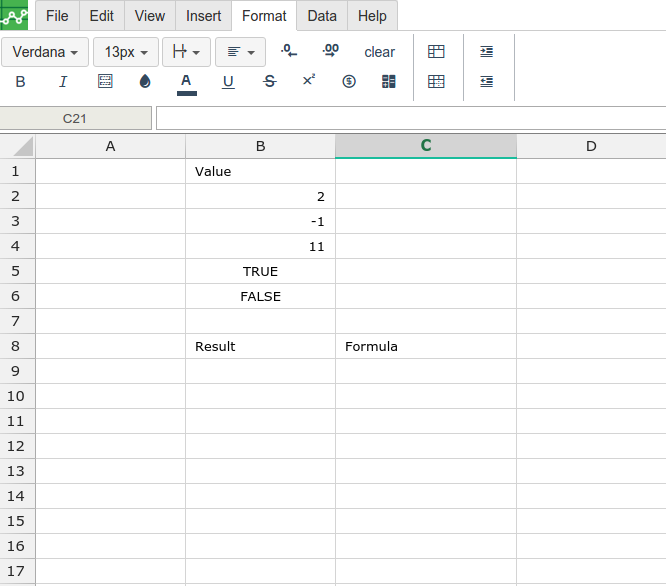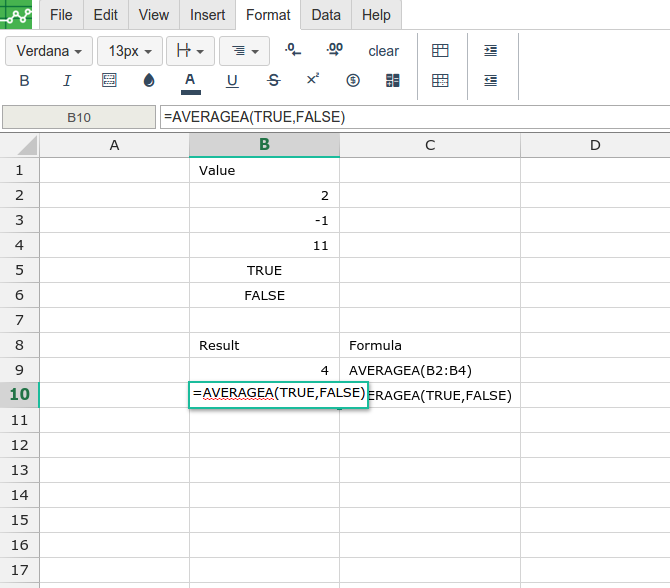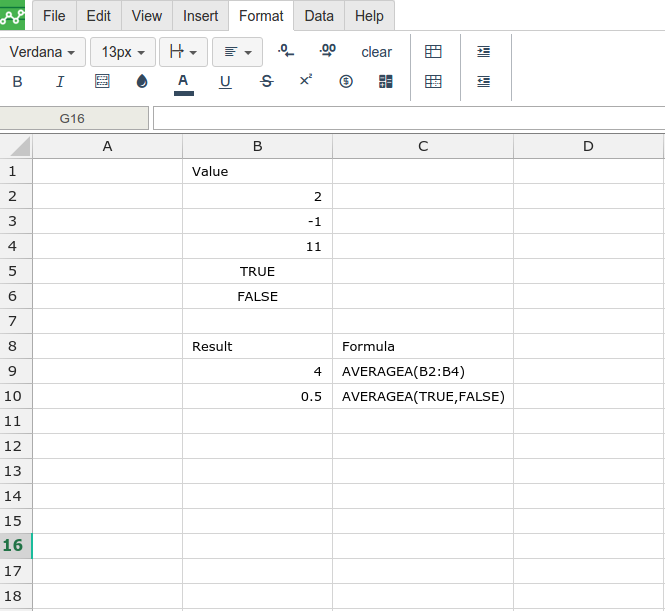AVERAGEA
Name of formula:
AVERAGEA()
Definition:
This function calculates the average of the specified values, including text or logical values as well as numeric values.
Syntax:
AVERAGEA(value1,value2,...)
AVERAGEA(array)
AVERAGEA(array1,array2,...)
Notes
Arguments
Each argument can be a double-precision floating-point value, an integer value, or an array (cell range). Up to 255 arguments may be included. You can use a single array (cell range) instead of a list of values. You can use multiple arrays (cell ranges) as well.
Remarks
This is a measure of the variability in a data set.
This function differs from AVERAGE because it allows text or logical values as well as numeric values.
Data Types
Accepts numeric, logical, or text data for all arguments. Returns numeric data.
Step 1. To begin to use AVERAGEA formula, start with the Excellentable you would like to edit.

Step 2. Then type the AVERAGEA formula into the cell you have chosen to display the outcome:

Step 3. Excellentable will generate the outcome when hitting enter.

Live Excellentable Example
A
|
B
|
C
|
|
|---|---|---|---|
1
|
|||
2
|
|||
3
|
|||
4
|
|||
5
|
|||
6
|
|||
7
|
|||
8
|
|||
9
|
|||
10
|
See Also
AVERAGEIF: This function calculates the average of the specified numeric values provided that they meet the specified criteria.well as numeric values.
AVERAGEIFS: This function calculates the average of all cells that meet multiple specified criteria.
